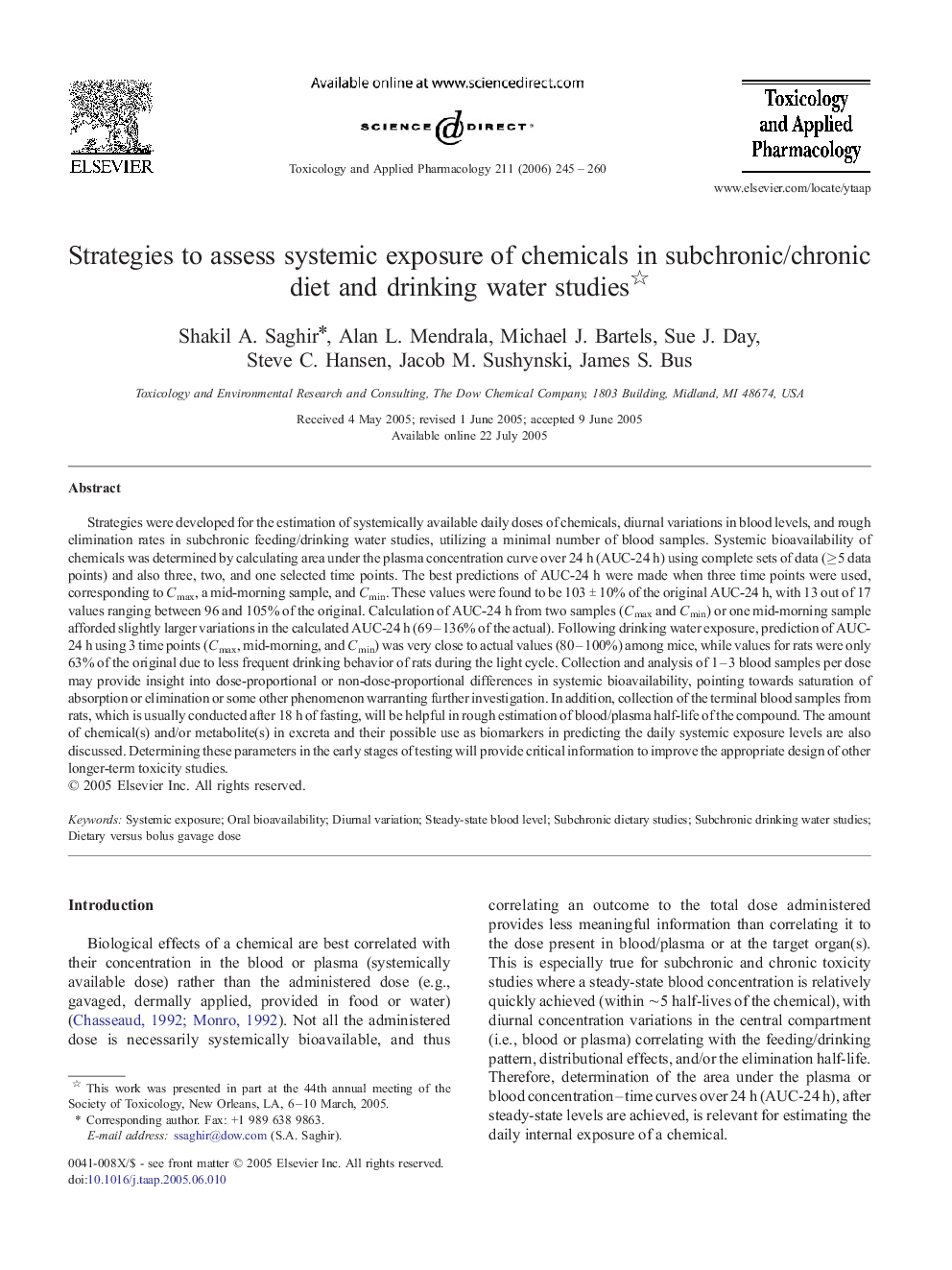| کد مقاله | کد نشریه | سال انتشار | مقاله انگلیسی | نسخه تمام متن |
|---|---|---|---|---|
| 2571882 | 1128656 | 2006 | 16 صفحه PDF | دانلود رایگان |

Strategies were developed for the estimation of systemically available daily doses of chemicals, diurnal variations in blood levels, and rough elimination rates in subchronic feeding/drinking water studies, utilizing a minimal number of blood samples. Systemic bioavailability of chemicals was determined by calculating area under the plasma concentration curve over 24 h (AUC-24 h) using complete sets of data (≥5 data points) and also three, two, and one selected time points. The best predictions of AUC-24 h were made when three time points were used, corresponding to Cmax, a mid-morning sample, and Cmin. These values were found to be 103 ± 10% of the original AUC-24 h, with 13 out of 17 values ranging between 96 and 105% of the original. Calculation of AUC-24 h from two samples (Cmax and Cmin) or one mid-morning sample afforded slightly larger variations in the calculated AUC-24 h (69–136% of the actual). Following drinking water exposure, prediction of AUC-24 h using 3 time points (Cmax, mid-morning, and Cmin) was very close to actual values (80–100%) among mice, while values for rats were only 63% of the original due to less frequent drinking behavior of rats during the light cycle. Collection and analysis of 1–3 blood samples per dose may provide insight into dose-proportional or non-dose-proportional differences in systemic bioavailability, pointing towards saturation of absorption or elimination or some other phenomenon warranting further investigation. In addition, collection of the terminal blood samples from rats, which is usually conducted after 18 h of fasting, will be helpful in rough estimation of blood/plasma half-life of the compound. The amount of chemical(s) and/or metabolite(s) in excreta and their possible use as biomarkers in predicting the daily systemic exposure levels are also discussed. Determining these parameters in the early stages of testing will provide critical information to improve the appropriate design of other longer-term toxicity studies.
Journal: Toxicology and Applied Pharmacology - Volume 211, Issue 3, 15 March 2006, Pages 245–260